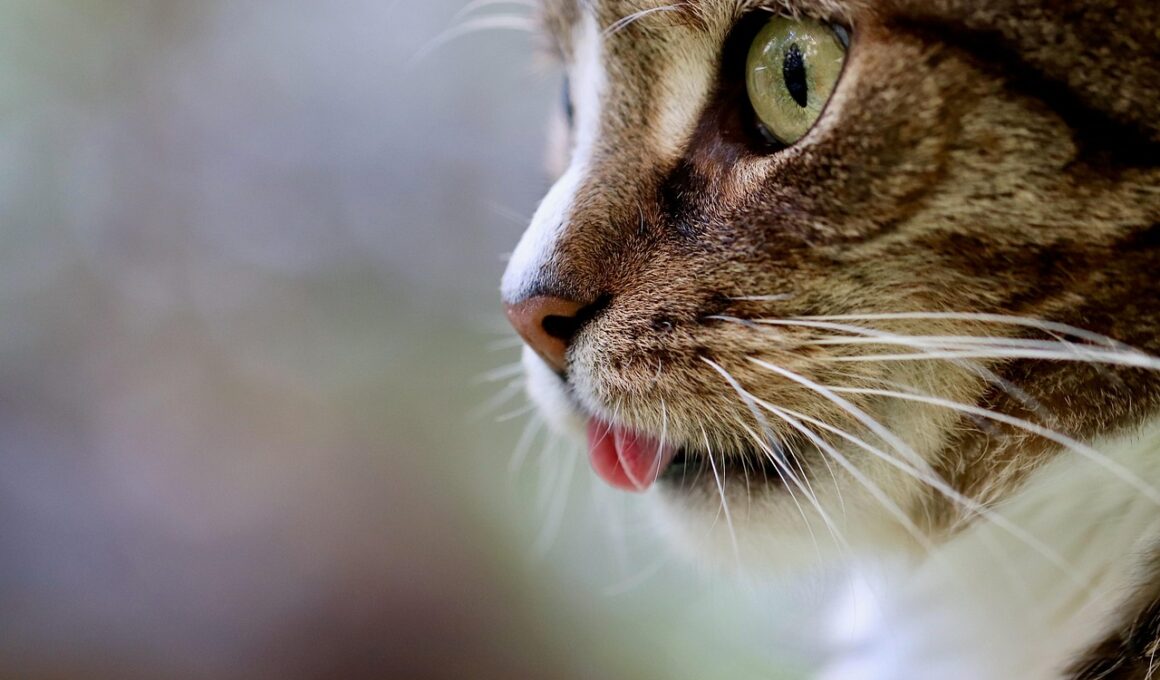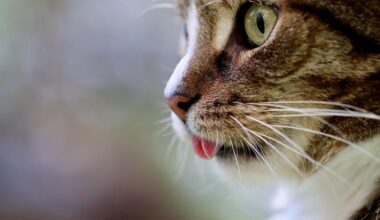Impact of Multiple Pets on Your Cat Insurance Premiums
When considering cat insurance, the number of pets you have can significantly influence your premiums. Each pet adds complexity to your insurance policy, often leading to higher costs. Insurers assess risk based on various factors, including breed, age, and health history. When multiple cats are present, insurers may perceive an increased likelihood of claims filed, which can raise coverage costs. Additionally, your living situation, such as whether you have a large home or live in a smaller space, can also affect premium calculations. Understanding how these factors intertwine could help you make informed decisions about insurance. Comparing quotes from different providers allows you to find the most suitable option tailored to your household’s unique needs. Furthermore, some insurers offer discounts for bundled policies, which can lead to a more cost-effective solution. It’s essential to provide accurate information during the application process for precise quoting. Seek advice from insurance agents who specialize in pet coverage. They can offer invaluable information about the potential impact of multiple pets on your premiums.
The health history of each cat also plays a vital role in determining insurance costs. If you own multiple cats, insurers will thoroughly review the health records of each pet, assessing any pre-existing conditions. Pets with chronic illnesses or a history of veterinary visits might increase the overall risk and premium amounts. Furthermore, the age of your cats is a pertinent factor. Older animals typically have higher premiums due to increased health risks associated with aging, such as the likelihood of developing diseases that may require extensive treatments. It’s crucial to keep track of your pets’ health, as maintaining a good health record can help mitigate some premium costs. Consider preventive measures, such as regular check-ups and vaccinations, which may improve your pet’s health and potentially lower your insurance premiums. Also, consider enrolling in wellness programs offered by some insurance companies that can offset costs associated with routine care. This proactive approach not only benefits your pets’ health but may also influence insurance cost factors favorably, especially in a multi-pet household.
Understanding Premium Factors for Multiple Cats
Your address and local veterinary costs also contribute to determining premiums. Locations with higher veterinary fees often lead to increased insurance costs, reflecting the actual expenses insurers anticipate for treatments. If you have multiple cats, the cumulative effect of these costs can potentially raise your insurance premiums. Always consider your geographical area when budgeting for pet expenses, including insurance. Moreover, some insurers emphasize the importance of the quality and frequency of veterinary care. Having a reliable veterinarian who provides thorough care for all your pets can enhance eligibility for discounts. Insurers may reward pet owners who demonstrate responsibility in managing their pets’ health. Understanding the nuances of how geography and veterinary involvement affect your insurance costs can help you make informed choices regarding your pets’ coverage. Exploring local pet health incentives or cooperative care programs may also lead to attractive deals on insurance premiums. It’s imperative to stay ahead by researching the environmental factors that may influence your overall pet care expenditures across various areas.
The type of coverage you select for your cats further amplifies the insurance cost dynamic. When insuring multiple pets, you have options like accident-only plans, comprehensive wellness coverage, or customizable policies. Each coverage type varies in terms of what conditions are included and the respective premiums involved. If you choose a policy that covers more extensive treatments or care, expect to pay higher premiums. However, investing in comprehensive plans might be prudent if your pets face potential health challenges. Evaluating the specifics of every policy can reveal hidden fees, limits, and exclusions that may impact your financial responsibility in the event of a claim. Speaking with an experienced insurance advisor can help clarify policy options to ensure your multiple pets receive adequate health coverage. Cost versus coverage is crucial, and finding the right balance is essential for your budget. Carefully explore the features and potential benefits of each policy, prioritizing the health needs of your cats while mitigating overall expenses associated with insurance assessments.
Pet Ownership and Lifestyle Choices
Your lifestyle choices as a pet owner can significantly impact cat insurance costs as well. Cat owners often have varying lifestyles that affect how their pets are cared for and the associated insurance premiums. For instance, if you frequently travel with your cats or opt for pet daycare services, you may need additional coverage that caters to such activities. These additional services usually come at an extra cost, prompting increases in overall premiums. Moreover, if you actively engage in pet-related activities, like showing or agility training, this would also necessitate specialized insurance to ensure adequate coverage while under varying stress factors. Such activities sometimes increase risk levels for injuries, prompting insurers to charge higher premiums based on situational risk assessment. It is essential to evaluate how your lifestyle impacts your cats’ health and insurance needs. Cat insurance is unique, reflecting each owner’s approach to raising their pets, so be aware of how these elements play a role in shaping your overall premiums.
Additionally, your choice of cat breeds can play a significant role in insurance costs. Certain breeds are prone to specific health issues, which can translate into higher premiums. For instance, breeds like Maine Coons are known for their physical issues, while Siamese may be prone to genetic disorders. If you own multiple cats comprising different breeds, this diversity can affect your total insurance costs. Insurers typically analyze breed-related risks alongside other factors when calculating premiums. Owning a mixed breed or a breed less susceptible to certain diseases may lower your premiums due to perceived risk factors. Therefore, having a good understanding of the insurance implications based on breed differences can be highly advantageous. When considering bringing new pets into your home, factors such as breed type should always weigh into the decision. Consult with your vet or insurance advisor to understand better how breed risk affects pricing structures in multiple pet households.
Strategies to Manage Multiple Pet Insurance Costs
Exploring strategies to effectively manage multiple pet insurance costs can lead to better financial outcomes. Some pet owners opt for multi-pet discounts that many insurers offer as an incentive for covering more than one animal. By taking advantage of these discounts, pet owners may find a significant reduction in their monthly premiums. Additionally, bundling various insurance policies, like home and auto, might lead to savings as well. Be sure to consult with your provider about any potential deals that could be applied to multiple pets. Another strategy is to increase your deductible, which can lower monthly premium payments, making insurance more manageable over time. However, it is important to fully understand how increased deductibles might affect the out-of-pocket expenses in the event of an emergency. Seeking advice from other pet owners or forums can provide insights on effective strategies others have implemented to maintain lower insurance costs. Remaining proactive in researching the marketplace regularly can help you stay informed about new offers and discounts that could positively affect your multiple pet insurance experience.
Finally, regular communication with your insurer regarding any changes in your pets’ health or living situations can help manage costs effectively. When insurers are aware of your pets’ status, they can offer suggestions to optimize your policies. Disclosing any health changes or adding new pets to your household can result in premium adjustments that either increase or potentially decrease costs. Moreover, as your pets age or their health improves, it’s wise to review your policy specifications to ensure they reflect accurate circumstances. Insurers may offer adjustments to premiums if your pet’s health situation changes positively. This adaptability can play a crucial role in maintaining your budget while ensuring your pets still enjoy the necessary coverage. Always make a habit of updating your insurer on relevant changes that could affect payment plans. Furthermore, local pet health initiatives or community services may provide additional support that could connect you to lower insurance rates. Continuous engagement and evaluation of both the insurer and the pets’ needs foster a successful environment for optimal coverage and financial efficiency in managing multiple pet health expenses.


